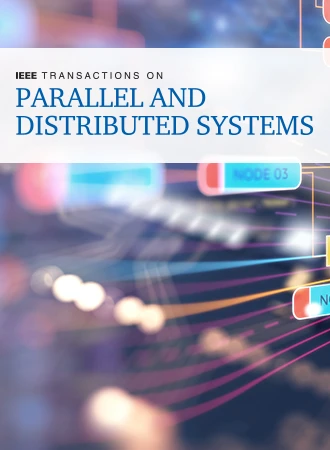Distributed and Adaptive Partitioning for Large Graphs in Geo-Distributed Data Centers
IF 5.6
2区 计算机科学
Q1 COMPUTER SCIENCE, THEORY & METHODS
IEEE Transactions on Parallel and Distributed Systems
Pub Date : 2025-04-03
DOI:10.1109/TPDS.2025.3557610
引用次数: 0
Abstract
Graph partitioning is of great importance to optimizing the performance and cost of geo-distributed graph analytics applications. However, it is non-trivial to obtain efficient and effective partitioning due to the challenges brought by the地理分布数据中心中大图的分布式和自适应分区
图划分对于优化地理分布式图分析应用程序的性能和成本具有重要意义。然而,由于地理分布式数据中心的大图规模、图的动态变化和网络的异构性给分区带来的挑战,实现高效、有效的分区并不是一件容易的事情。现有的研究通常采用基于启发式的方法来实现大型图的快速和平衡分区,这不足以解决我们问题的复杂性。此外,许多应用程序的图形结构可以在不同的频率下变化。动态分区方法通常侧重于实现低延迟以快速适应更改,不幸的是这会牺牲分区的有效性。此外,这些方法不知道图形的动态性,并且可能会为了不必要的低延迟而过度牺牲效率。为了解决现有研究的局限性,我们提出了一种新的图分区器DistRLCut,它利用多智能体强化学习(MARL)来解决分区问题的复杂性。为了实现大型图的快速分区,DistRLCut将MARL应用于分布式实现,这大大加快了学习过程。此外,DistRLCut结合了两种技术来权衡分区的有效性和效率,包括局部训练和代理抽样。通过自适应调整局部训练迭代次数和代理采样率,DistRLCut能够在图动态性所需的开销约束下获得良好的分区结果。使用真实云数据中心和真实图形的实验表明,与最先进的静态分区方法相比,DistRLCut将地理分布式图形分析的性能提高了11%-95%。DistRLCut每秒可以划分超过2800万条边,展示了它对大型图的可扩展性。与最先进的动态分区相比,使用不同的图形更改频率,DistRLCut可以将性能提高71%。
本文章由计算机程序翻译,如有差异,请以英文原文为准。
求助全文
约1分钟内获得全文
求助全文
来源期刊

IEEE Transactions on Parallel and Distributed Systems
工程技术-工程:电子与电气
CiteScore
11.00
自引率
9.40%
发文量
281
审稿时长
5.6 months
期刊介绍:
IEEE Transactions on Parallel and Distributed Systems (TPDS) is published monthly. It publishes a range of papers, comments on previously published papers, and survey articles that deal with the parallel and distributed systems research areas of current importance to our readers. Particular areas of interest include, but are not limited to:
a) Parallel and distributed algorithms, focusing on topics such as: models of computation; numerical, combinatorial, and data-intensive parallel algorithms, scalability of algorithms and data structures for parallel and distributed systems, communication and synchronization protocols, network algorithms, scheduling, and load balancing.
b) Applications of parallel and distributed computing, including computational and data-enabled science and engineering, big data applications, parallel crowd sourcing, large-scale social network analysis, management of big data, cloud and grid computing, scientific and biomedical applications, mobile computing, and cyber-physical systems.
c) Parallel and distributed architectures, including architectures for instruction-level and thread-level parallelism; design, analysis, implementation, fault resilience and performance measurements of multiple-processor systems; multicore processors, heterogeneous many-core systems; petascale and exascale systems designs; novel big data architectures; special purpose architectures, including graphics processors, signal processors, network processors, media accelerators, and other special purpose processors and accelerators; impact of technology on architecture; network and interconnect architectures; parallel I/O and storage systems; architecture of the memory hierarchy; power-efficient and green computing architectures; dependable architectures; and performance modeling and evaluation.
d) Parallel and distributed software, including parallel and multicore programming languages and compilers, runtime systems, operating systems, Internet computing and web services, resource management including green computing, middleware for grids, clouds, and data centers, libraries, performance modeling and evaluation, parallel programming paradigms, and programming environments and tools.
 求助内容:
求助内容: 应助结果提醒方式:
应助结果提醒方式:


